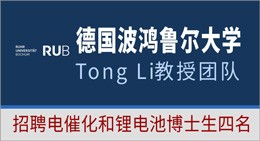当前位置:
X-MOL 学术
›
Clin. J. Am. Soc. Nephrol.
›
论文详情
Our official English website, www.x-mol.net, welcomes your
feedback! (Note: you will need to create a separate account there.)
C3 Glomerulopathy Recurs Early after Kidney Transplantation in Serial Biopsies Performed within the First 2 Years after Transplantation
Clinical Journal of the American Society of Nephrology ( IF 8.5 ) Pub Date : 2024-06-07 , DOI: 10.2215/cjn.0000000000000474
Blanca Tarragón 1 , Yonatan Peleg 1 , Geetha Jagannathan 2 , Miroslav Sekulic 2 , Jae-Hyung Chang 1 , David J Cohen 1 , Russell J Crew 1 , Geoffrey K Dube 1 , Hilda E Fernandez 1 , Syed Ali Husain 1 , Sumit Mohan 1 , Heather K Morris 1 , Gerald B Appel 1 , Paresh Jadav 1 , Dominick Santoriello 2 , Satoru Kudose 2 , M Barry Stokes 2 , Ibrahim Batal 2 , Andrew S Bomback 1
Clinical Journal of the American Society of Nephrology ( IF 8.5 ) Pub Date : 2024-06-07 , DOI: 10.2215/cjn.0000000000000474
Blanca Tarragón 1 , Yonatan Peleg 1 , Geetha Jagannathan 2 , Miroslav Sekulic 2 , Jae-Hyung Chang 1 , David J Cohen 1 , Russell J Crew 1 , Geoffrey K Dube 1 , Hilda E Fernandez 1 , Syed Ali Husain 1 , Sumit Mohan 1 , Heather K Morris 1 , Gerald B Appel 1 , Paresh Jadav 1 , Dominick Santoriello 2 , Satoru Kudose 2 , M Barry Stokes 2 , Ibrahim Batal 2 , Andrew S Bomback 1
Affiliation
3GN and dense deposit disease (DDD), results from dysregulation of the alternative complement pathway. Data on disease recurrence after kidney transplantation are limited, and details on histologic features of recurrent C3G are scarce. We aimed to evaluate C3G recurrence in the allograft, with a focus on histologic presentation and progression. Methods We retrospectively analyzed 18 patients with native kidney failure attributed to C3G (12 C3GN and six DDD), who received a kidney transplant from January 2016 to January 2023. Demographic, genetic, clinical, and histologic data were studied. The NanoString 770 genes PanCancer Immune Profiling Panel was used for transcriptomic analysis. Disease recurrence was the primary outcome. Results During a median (interquartile range) follow-up period of 37 (18–56) months, C3G recurrence occurred in 16 (89%) patients (11 with C3GN and five with DDD) at a median (interquartile range) of 33 (13–141) days after transplantation. Over a third (38%) of recurrent cases were detected in protocol biopsies, and only 31% of patients presented with >300 mg/g of proteinuria. Recurrence in index biopsies was mainly established through a combination of immunofluorescence and electron microscopy findings, while it showed only subtle histologic alterations and no characteristic transcriptomic signals. Over time, histologic chronicity indices increased, but all the allografts were functioning at the end of follow-up. Patients with recurrence of C3GN and DDD showed overlapping immunofluorescence and electron microscopy findings and had similar recurrence rate and time to recurrence. Conclusions Most of the patients with native kidney failure attributed to C3G developed disease recurrence very early after kidney transplantation, usually with minimal proteinuria, mild histologic alterations, and favorable short-term allograft survival. Immunofluorescence and electron microscopy played a crucial role in detecting early, subclinical recurrence of C3GN and DDD, which showed significant overlapping features....
中文翻译:

C3 肾小球病在移植后前 2 年内进行的系列活检中肾移植后早期复发
3GN 和致密沉积病 (DDD) 是由于替代补体途径失调所致。肾移植后疾病复发的数据有限,关于复发性 C3G 的组织学特征的详细信息很少。我们旨在评估同种异体移植物中的 C3G 复发,重点是组织学表现和进展。方法 我们回顾性分析了 2016 年 1 月至 2023 年 1 月接受肾移植的 18 例 C3G 归因于自体肾衰竭的患者 (12 例 C3GN 和 6 例 DDD)。研究了人口学、遗传学、临床和组织学数据。NanoString 770 基因 PanCancer 免疫分析 Panel 用于转录组学分析。疾病复发是主要结局。结果在 37 (18-56) 个月的中位(四分位距)随访期间,16 例 (89%) 患者(11 例 C3GN 和 5 例 DDD)发生 C3G 复发,中位(四分位距)为移植后 33 (13-141) 天。超过三分之一 (38%) 的复发病例是在方案活检中检测到的,只有 31% 的患者出现 >300 mg/g 蛋白尿。指标活检的复发主要通过免疫荧光和电子显微镜检查结果的结合来确定,而它只显示细微的组织学改变,没有特征性的转录组信号。随着时间的推移,组织学慢性指数增加,但所有同种异体移植物在随访结束时都起作用。C3GN 和 DDD 复发患者表现出重叠的免疫荧光和电子显微镜检查结果,并且具有相似的复发率和复发时间。 结论 大多数归因于 C3G 的自体肾衰竭患者在肾移植后很早就出现疾病复发,通常蛋白尿轻微,组织学改变轻微,短期同种异体移植生存率良好。免疫荧光和电子显微镜在检测 C3GN 和 DDD 的早期亚临床复发中起着至关重要的作用,这些复发显示出显着的重叠特征。
更新日期:2024-06-07
中文翻译:

C3 肾小球病在移植后前 2 年内进行的系列活检中肾移植后早期复发
3GN 和致密沉积病 (DDD) 是由于替代补体途径失调所致。肾移植后疾病复发的数据有限,关于复发性 C3G 的组织学特征的详细信息很少。我们旨在评估同种异体移植物中的 C3G 复发,重点是组织学表现和进展。方法 我们回顾性分析了 2016 年 1 月至 2023 年 1 月接受肾移植的 18 例 C3G 归因于自体肾衰竭的患者 (12 例 C3GN 和 6 例 DDD)。研究了人口学、遗传学、临床和组织学数据。NanoString 770 基因 PanCancer 免疫分析 Panel 用于转录组学分析。疾病复发是主要结局。结果在 37 (18-56) 个月的中位(四分位距)随访期间,16 例 (89%) 患者(11 例 C3GN 和 5 例 DDD)发生 C3G 复发,中位(四分位距)为移植后 33 (13-141) 天。超过三分之一 (38%) 的复发病例是在方案活检中检测到的,只有 31% 的患者出现 >300 mg/g 蛋白尿。指标活检的复发主要通过免疫荧光和电子显微镜检查结果的结合来确定,而它只显示细微的组织学改变,没有特征性的转录组信号。随着时间的推移,组织学慢性指数增加,但所有同种异体移植物在随访结束时都起作用。C3GN 和 DDD 复发患者表现出重叠的免疫荧光和电子显微镜检查结果,并且具有相似的复发率和复发时间。 结论 大多数归因于 C3G 的自体肾衰竭患者在肾移植后很早就出现疾病复发,通常蛋白尿轻微,组织学改变轻微,短期同种异体移植生存率良好。免疫荧光和电子显微镜在检测 C3GN 和 DDD 的早期亚临床复发中起着至关重要的作用,这些复发显示出显着的重叠特征。







































 京公网安备 11010802027423号
京公网安备 11010802027423号